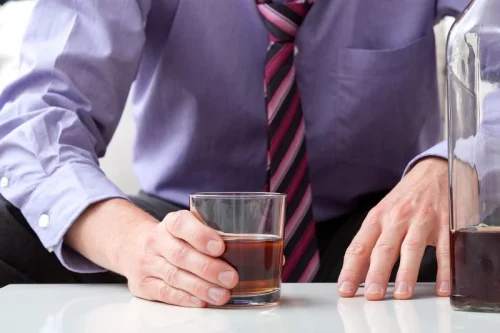Bilateral thrombosis is estimated to occur 6.8% to 37% of the time; however, thrombosis in the opposite leg might be asymptomatic. The most commonly occurring local symptoms were groin pain, swelling, erythema, elevated local temperature, and/or cyanosis or skin necrosis of the affected limb [15]. Access to prevention services is essential for all persons who inject drugs, who are at greater risk for Viral Hepatitis, HIV, and other infections. Treatment of infectious complications is the same as that for similar infections resulting from other conditions; it includes use of antibiotics for bacterial infections and incision and drainage of abscesses. Treatment may be complicated by difficulty obtaining venous access and by poor adherence to treatment regimens. Many of the substances that require intramuscular injection come pre-prepared in liquid form.
Preventive Care Recommendations

iv drug use often causes more intense highs, making it difficult for someone to gauge how much of a drug they have taken. The most common fungi that may cause a fungal infection include Aspergillus and Candida. While the symptoms of a fungal infection may vary depending on the type of fungi that caused the infection, common symptoms include a fever and chills. If you have symptoms of septic thrombophlebitis, you should seek immediate medical attention. An early diagnosis can increase the chance of effective treatment and minimize the potential for possible medical complications.
We’re transforming healthcare
Furthermore, those ex-users who are now asymptomatic may already be infected from prior needle-sharing. As discussed in detail in Chapters 4 and 5, prevention programs should include planned variations of intervention strategies accompanied by sound evaluations to determine what is likely to be successful in preventing further infection and what is less likely to be helpful. Currently, however, there is no national system for monitoring ongoing prevention activities for IV drug users. The committee recommends that the appropriate government authorities take immediate action to establish data collection systems for monitoring present AIDS prevention efforts for IV drug users.

Bacterial infection
Despite major gaps in current knowledge and understanding of drug use and the limitations imposed by imperfect methods for gathering data, the committee finds that considerable valuable information has already been acquired. Moreover, the knowledge base needed to design, implement, and evaluate measures to change high-risk behavior in IV drug users continues to grow. Several factors contribute to the geographic variability of HIV seroprevalence rates among IV drug users in the United States. In addition to limited economic resources, the need for a constant supply of drugs probably reduces their mobility, although they appear to travel some, especially to locations where friends can help them obtain drugs. Other IV drug users—for example, prostitutes or those who sell drugs—may be induced to travel by their ability to earn money in new cities. Data on the life-styles of IV drug users include little information on physical mobility.
Harm Reduction Methods for Intravenous Drug Use
A 2019 study of a cancer care center in Texas found that more than half of the nurses had administered IV opioids too quickly. The type and method of IV injection a person requires will depend on several factors. These include the medication and dose they require, how urgently they require the medication, and how long the medication needs to remain in their system.

CDC Clinical Practice Guideline at a Glance

Hitting arteries and nerves is dangerous, painful, and presents its own similar spectrum of problems. A systematic review by Mathers et al. finds PWID have increased in several countries overthe last decade and are reported with a high prevalence of HIV34. The high HIV incidence among PWID in many developing countries can be controlledby key harm reduction and treatment interventions such as needle and syringe programs,medication-assisted therapy (MAT), HIV counseling and testing, and antiretroviral therapy35.
- Moving toward a more moderate, more realistic set of goals will broaden the possible approaches to risk reduction programs; these efforts should include mechanisms to prevent relapse.
- Some common sites for short-term IV lines include forearm locations, such as the wrist or elbow, or the back of the hand.
- Opioids are narcotic, painkilling drugs produced from opium or made synthetically.
- A small piece of cotton is sometimes used to strain out undissolved impurities from the solution in the cooker as it is drawn up into the syringe.
- Nearly all drugs can be injected intravenously, but some are more commonly used than others.
- For example, analysis of the drug treatment careers of TOPS clients and the estimation of transitional functions of treatment entry and reentry using events-based analysis have provided data to increase the validity of a number of the techniques (Hubbard et al., 1985a).
Commonly used syringes usually have a built-in 28 gauge (or thereabouts) needle typically 1/2 or 5/8 inches long. In recreational-use drug culture, preparation may include mixing the powdered drug with water to create an aqueous solution, and then the solution is injected. This act is often colloquially referred to as “slamming”, “shooting up”, “smashing”, “banging”, “pinning”, or “jacking-up”, often depending on the specific drug subculture in which the term is used (e.g. heroin, cocaine, or methamphetamine). Risk may be greater with IV use since it puts the opioid right into your bloodstream, heightening its effects.
- Beyond just needle exchange programs, the other major harm reduction strategy for drug users are safe injecting facilities (SIFs).
- Each time someone injects a drug, they increase their risk of contracting infections and developing sepsis, whether they use these drugs occasionally or on a regular basis.
- For example, opiates such as heroin can become physically addictive after only a few injections.
Arteries are located deeper in the body than veins and so are not visible as many of your veins are. As important as preparing your drugs as cleanly as possible is injecting them as safely and as carefully as possible. The Academy complex comprises the National Academy of Sciences, the National Academy of Engineering, and the Institute of Medicine.
Hepatitis C
Those who are addicted and suffering drug hunger or withdrawal symptoms may also want to inject promptly. Even if they are not addicted, some users, out of a classical type of conditioning, will feel the urge to inject the drug immediately after purchasing it (Wikler, 1973; Des Jarlais et al., 1985). All of these conditions can increase the likelihood of injection with used equipment. We believe in treating each person on a physical, emotional and social level to help them make positive lifelong changes. Professional medical addiction treatments can empower those misusing substances to embark on a journey of recovery and lifelong sobriety.